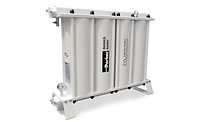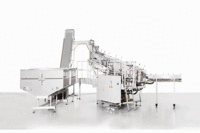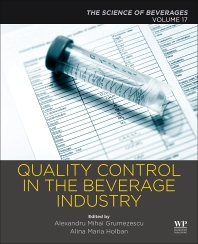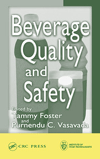![]()
Improving Beverage Security and Quality via Protection of Carbonation Co2
- ’Carbon Dioxide Quality Guidelines and Analytical Procedure Bibliography’, Rev 1, 2001, International Society of Beverage Technologists (ISBT), USA.
-
’Commodity Specification For Carbon Dioxide’, CGA G-6.2, 4th edition, 2000, Compressed Gas Association (CGA), USA.
- ’Carbon Dioxide Source Certification, Quality Standards and Verification’ IGC Doc 70/99/E, European Industrial Gases Association, EIGA, Belgium.
| Co2 Quality Specifications (an extract) | ||
| Constituent | Critical Limitppm (v/v) | Rationale |
| CO2 | 99.9 % minimum | |
| Total Volatile Hydrocarbons (as Methane) | 50 ppm(v/v) max, of which a maximum of 20ppm(v/v) as total non-methane hydrocarbons | Sensory |
| Total Aromatic Hydrocarbon(Benzene) | 0.02 ppm (v/v) max. | Regulatory |
| Acetaldehyde | 0.2 ppm (v/v) max. | Sensory |
| Total Sulfur (excluding SO2)(as S) | 0.1 ppm (v/v) max. | Sensory |
| PEOPLE | |
|
Matt Luckas has joined Total Logistic
Control, Zeeland, Mich., as vice president of supply chain services. In
his new position, Luckas will oversee operations, including fleet operations,
transportation management and logistics and distribution services.
The Packaging Machinery Manufacturers Institute (PMMI) recently announced the addition of four members to its 18-person board of directors. Glen Long, president and chief executive officer of Inex Vision Systems, Clearwater, Fla., was named chairman; Robert F. Risley, president of Materials Handling Systems Inc., Savage, Md., was voted vice chairman; Rocky Marquis, president of MARQ Packaging Systems Inc., Yakima, Wash., past chairman; and Charles D. Yuska, president of PMMI, Arlington, Va., as president of the board. In other personnel news, Paula Feldman was recently promoted to director of statistics, Matt Croson was appointed director of member services, and Sara Kryder was promoted to manager of communications. Karl Mackey has been named operations director in China at TNT Logistics, Jacksonville, Fla. Mackey will have full operational responsibility for ANJI-TNT Automotive Logistics Co., TNT Logistics’ joint venture arrangement with Anji. In other company news, Russell W. Dixon assumed the position of senior manager of corporate communications. |
Harley Heinrich, RFID chief technologist
for Intermec Technologies Corp., Everett, Wash., was named co-chair of
the EPCglobal Inc. work group charged with completing a draft RFID standard
for a generation of RFID technology known as C1G2 or UHF Generation 2.
Reiner Leipold-Büttner was named executive vice president for engineering and manufacturing at Bosch Rexroth AG in Lohr, Germany. He will be responsible for manufacturing and product development at Bosch Rexroth AG. John E. Roycroft has been named vice president, key account management for Crown Americas Inc., a division of Crown Holdings Inc., Philadelphia. Roycroft moves to his new position from Crown Aerosol Packaging USA, where he served as president. Bob Appleby has been appointed president and chief executive officer at Tasker Capital Corp., Boston. Appleby will be responsible for U.S. operations. Interim President and Chief Executive Officer Arthur P. Bergeron will focus on his duties as chief financial officer. |





